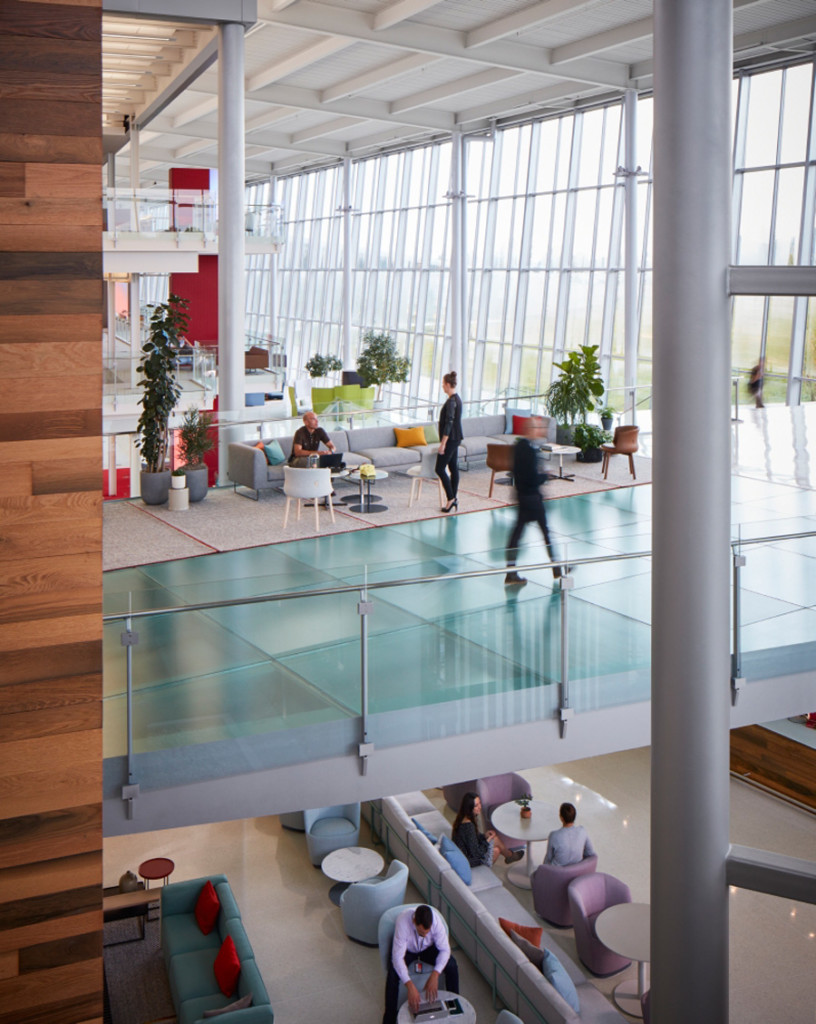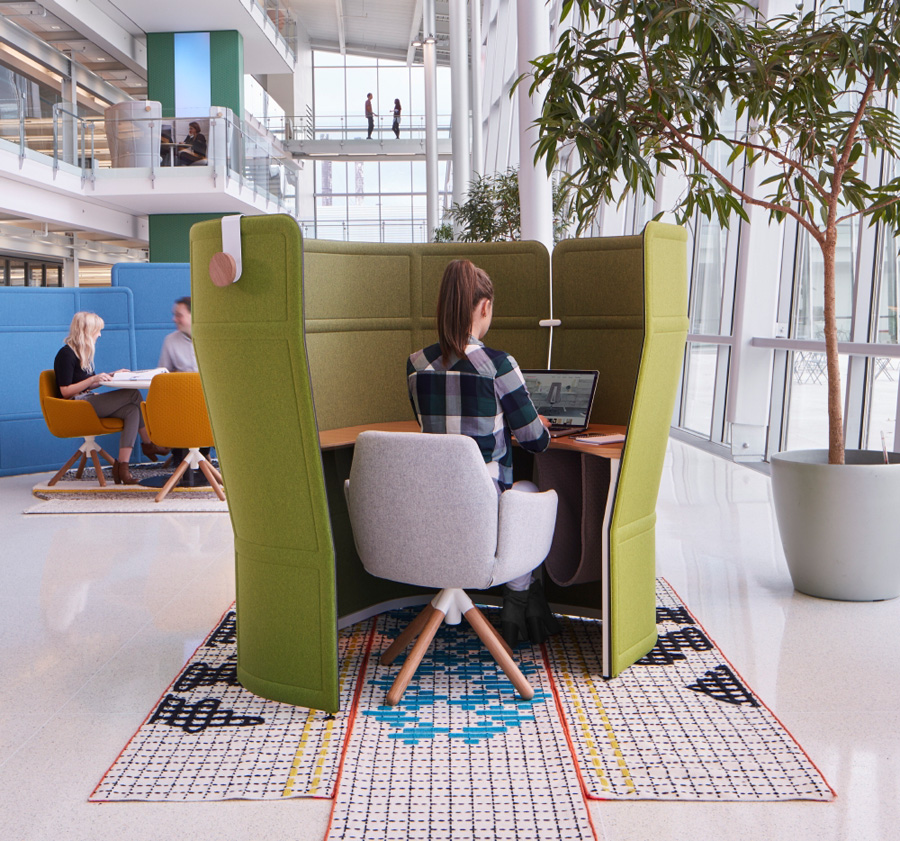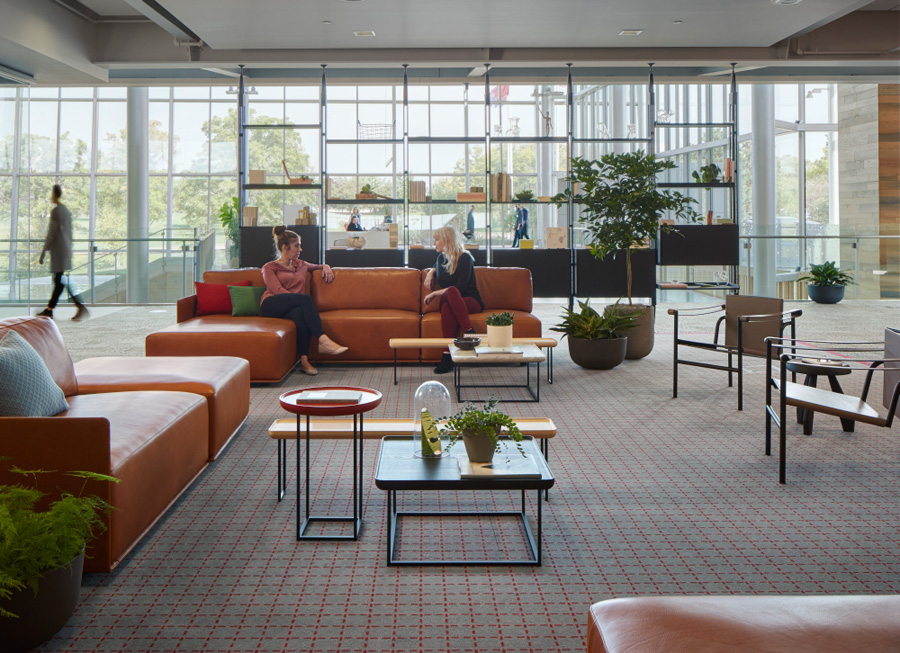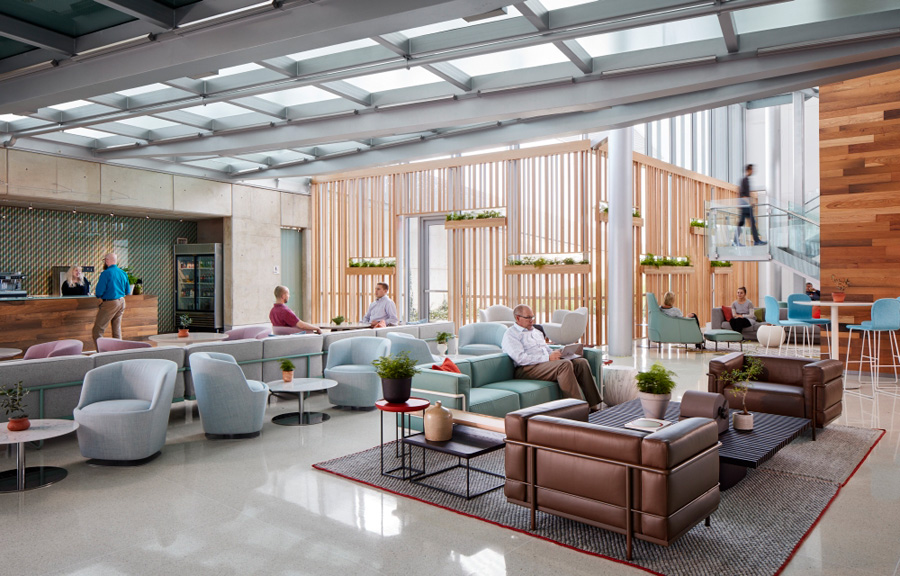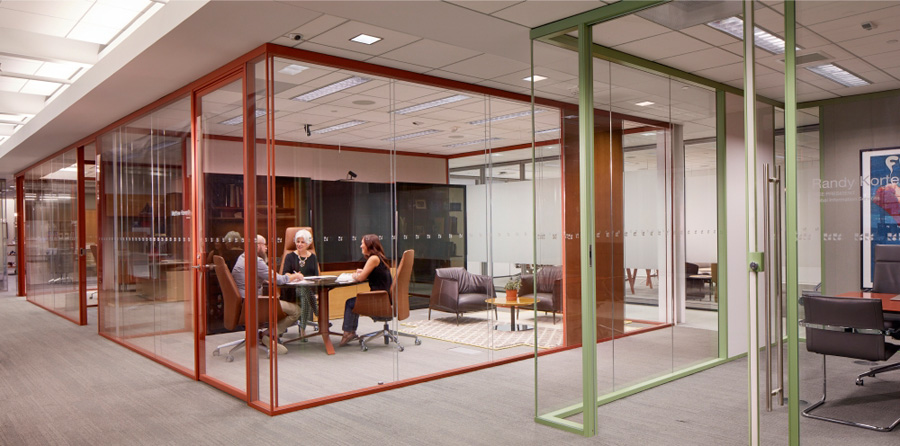Patricia Urquiola redesigned Haworth’s interiors last year. “You feel the material texture and the warmth that she brings us,” says Haworth president and CEO Franco Bianchi. “She touches people’s hearts.” Courtesy Haworth
It may be already a decade old, but One Haworth Center—the Haworth corporate headquarters and manufacturing facility in Holland, Michigan—still seems new. Sunlight cascades through the soaring atrium that spans the building’s north flank, flooding 300,000 square feet of office space, spilling down the sprawling entryway staircase into the ground-floor café. The structure’s three stories of glass and steel and its green roof engage in a seamless dialogue with 225 acres of western Michigan nature, connecting employees (Haworth calls them members) with the grasslands and marshes that surround the LEED Gold building. “I’ve been coming here for ten years,” says Dick Haworth, chairman emeritus of the privately held office-furniture company. “And I still smile each time I step inside.”
Haworth’s corporate headquarters has been looking even fresher since 2017, with its interiors redone by Patricia Urquiola. A Haworth collaborator since 2013—she co-designed that year’s Haworth showroom at NeoCon in Chicago—the Spanish designer has brought life and movement to the building’s common spaces. Not that the original interiors were insipid. Created by Ralph Johnson and Eva Maddox of Perkins+Will—the firm that also designed the building—the 2008 interiors were linear and smart, Raymond Kennedy, an industry veteran and Haworth’s director of North American marketing. “Patricia has made the spaces more inviting.”
One Haworth Center’s makeover is the latest in a long string of evolutionary changes that Haworth has undergone since founder G.W. Haworth—a former high school shop teacher—began making wooden retail display racks in his garage just after World War II. In the 1970s, chairman Dick Haworth (G.W.’s son) sold off parts of Haworth’s very profitable partition and wall business to fund research on new products. One of those products, the patented prewired panel that the company introduced in 1976, would become synonymous with Haworth and, more importantly, drive revenues from a few million to more than $2 billion by the year 2000.



